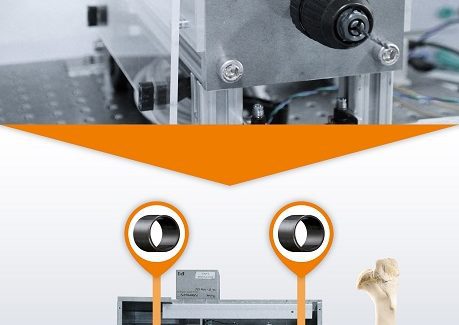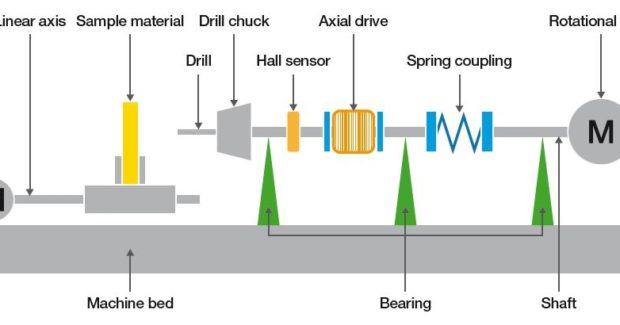How Smart Drilling Improves Bone Fracture Operations
When repairing a fracture in osteosynthesis, doctors once had to manually determine bone diameter and hole depth during the operation using a gauge, which could lead to mistakes in screw selection. Now an intelligent drilling machine can properly measure the length of screws without error.
Posted: October 25, 2018
In a project called “Smart Drill,” students from the Bremen Institute of Measurement Technology, Automation and Quality Science (BIMAQ; Bremen, Germany) developed an attachment for a medical drill with the goal of improving the safety of bone fracture operations. When fixing a fracture in osteosynthesis, or by means of surgically uniting the ends of the fracture, it is often necessary for doctors to make screw connections inside of the bone. In this process, the length of the screw must be precise in order to avoid injuring the surrounding tissue structure, and simultaneously to ensure sufficient strength. Determining the bone diameter and depth of the hole can only be ascertained in advance and is established during operation with a gauge. This is currently dependent on the operator’s experience and can lead to errors in screw selection. To make this process more secure, the students developed an attachment for the existing medical drill that properly measures the length of screws.
During the drilling process, the attachment measures the depth of the hole in order to determine the correct screw. Self-lubricating iglide L500 bearings made of high performance polymers from igus® GmbH (Cologne, Germany) are used at the bearing points of the drive shaft. The medical drilling machine required an optimal bearing to be developed in different speed and vibration frequency ranges without putting a negative influence on the system. “The combination of rotary drive and axial vibration requires the use of high quality plain bearings, not only to implement freedom of movement in the axial direction, but also to achieve the most accurate signals possible at high vibration frequencies,” explained Michael Sorg of BIMAQ. To cover these requirements, various iglide bearing materials were compared and iglide L500 was selected as the best option. The material offers low friction values and high wear resistance, allowing for both rotary and axial movement in bearing applications.
The iglide L500 is far from its load limit at speeds of up to 900 rpm, and is able to withstand the extreme temperatures of medical sterilization processes. Additionally important, the iglide L500 material is moisture resistant, absorbing only slight amounts, and is completely self-lubricating. This means there is no risk of contamination of the wound or premature bearing failure due to lubricant washout. The bearing thus meets the hygienic requirements of medical technology. The low installation sizes and the very light weight of iglide L500 compared to bearings made of metallic materials are also ideal.
igus® Inc., PO Box 14349, East Providence, RI, 02914, 800-521-2747, Fax: 401-438-2200, sales@igus.com, www.igus.com.





